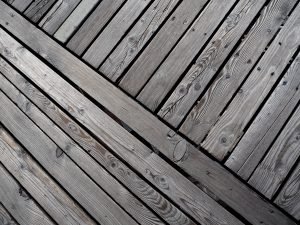Introduction
Welcome to the Texas Deck Company blog, where we prioritize your safety and aim to provide you with an enjoyable outdoor experience. In this article, we will explore the crucial topic of deck safety and why it matters. Whether you’re relaxing with family and friends or hosting a gathering, a secure deck is essential for your peace of mind and the well-being of everyone who uses it. Let’s delve into the key factors that impact deck safety and learn how to ensure a secure and enjoyable outdoor experience.
Why Deck Safety is Important
Deck safety should never be taken lightly. Your deck is an extension of your home, a place where memories are made, and good times are shared. By prioritizing deck safety, you create a secure environment for yourself, your loved ones, and your guests. A well-maintained and structurally sound deck not only enhances the overall aesthetics of your outdoor space but also adds value to your property.
Common Deck Safety Hazards
To ensure the safety of your deck, it’s important to be aware of common hazards that can compromise its structural integrity. Here are a few potential issues to watch out for:
- Wood Rot: Over time, exposure to the elements can cause wood to rot, weakening the deck’s framework. Inspect your deck regularly for signs of rot, such as soft or spongy areas, discoloration, or fungal growth.
- Loose or Missing Fasteners: Loose or missing nails, screws, or bolts can lead to wobbly railings, unstable stairs, and overall deck instability. Check for any loose or missing fasteners during your deck inspections.
- Cracked or Splintered Boards: Cracks and splinters not only affect the appearance of your deck but also pose safety hazards. Splinters can cause injuries, while cracked boards may indicate underlying structural issues.
- Improper Ledger Attachment: The ledger board, which connects the deck to your home, must be securely attached. A weak or improperly attached ledger can lead to deck collapse. If you notice any detachment or sagging, seek professional assistance immediately.
- Inadequate Railings: Sturdy railings are essential for preventing falls and accidents. Ensure that your railings meet local building codes and are of the appropriate height and spacing. Loose or wobbly railings should be addressed promptly.
How to Ensure Deck Safety
Now that we understand the importance of deck safety and are aware of common hazards, let’s explore the steps to ensure a secure and enjoyable outdoor experience:
- Regular Inspections: Conduct thorough inspections of your deck at least once a year, preferably during the springtime. Look for signs of wear and tear, such as wood rot, loose fasteners, or cracked boards. Take note of any issues that require immediate attention.
- Structural Integrity: Assess the overall structural integrity of your deck. Check for any signs of sagging, movement, or instability. If you notice any concerns, it’s best to consult professionals who specialize in deck construction and repair.
- Clean and Clear: Keep your deck clean and free from debris, such as leaves or branches. Regular cleaning prevents the buildup of moisture, mold, and mildew, which can contribute to wood rot and compromise the safety of your deck.
- Proper Maintenance: Maintain your deck by sealing and staining the wood periodically. This helps protect it from moisture, UV rays, and other damaging elements. Follow the manufacturer’s instructions for the appropriate products and application techniques.
- Safe Furniture and Accessories: When choosing furniture and accessories for your deck, prioritize safety and stability. Opt for sturdy, weather-resistant materials and avoid placing heavy items near the edges. Secure any loose items that could become projectiles during strong winds.
Regular Inspections and Maintenance
Regular inspections and maintenance are key to keeping your deck safe and in excellent condition. Here are some important aspects to consider during the inspection process:
- Check for Structural Damage: Inspect the entire deck, paying close attention to the ledger board, posts, beams, and joists. Look for signs of damage, decay, or structural instability.
- Examine Railings and Balusters: Ensure that railings and balusters are securely attached and meet local safety requirements. Check for any signs of rot, loose fasteners, or wobbly components.
- Evaluate Stairs: Inspect the stairs for stability and secure footing. Loose or damaged steps can pose a significant safety risk.
- Inspect Surface Boards: Carefully examine the surface boards for cracks, splinters, or any other visible damage. Replace any compromised boards promptly.
- Assess Lighting and Electrical Fixtures: Verify that all lighting and electrical fixtures are in good working order. Replace any faulty or damaged components.
- Clean and Treat the Deck: Thoroughly clean the deck to remove dirt, debris, and stains. Apply a suitable wood treatment or sealant to protect the deck from moisture and sun damage.
Deck Safety FAQs
FAQ 1: How often should I inspect my deck for safety?
We recommend conducting a comprehensive deck inspection at least once a year. Regular inspections allow you to identify and address any potential safety issues promptly.
FAQ 2: What are the signs of an unsafe deck?
Signs of an unsafe deck may include wood rot, cracked or splintered boards, loose or missing fasteners, inadequate railings, or sagging structures. If you notice any of these signs, it’s important to take immediate action.
FAQ 3: Can I fix deck safety issues myself?
While minor maintenance tasks can be done by homeowners, it’s crucial to involve professionals for more complex safety issues. Certified deck inspectors and contractors have the expertise to identify hidden problems and ensure proper repairs.
FAQ 4: How do I maintain my deck for long-lasting safety?
Regular maintenance is key to ensuring the long-term safety of your deck. This includes cleaning, sealing, and staining the wood, as well as conducting routine inspections and addressing any issues promptly.
FAQ 5: When should I consider replacing my deck?
If your deck exhibits severe structural damage, extensive wood rot, or other significant safety concerns, it may be time to consider a deck replacement. Consulting a professional can help you determine the best course of action.
Conclusion
At Texas Deck Company, we understand the importance of deck safety in providing you with a secure and enjoyable outdoor experience. By prioritizing regular inspections, addressing maintenance needs promptly, and being aware of potential safety hazards, you can ensure that your deck remains a safe haven for relaxation and entertainment.
If you require professional assistance with deck inspections, repairs, or replacements, don’t hesitate to reach out to us. Call us at (214) 427-8364 or visit our website www.texasdeckcompany.com to request our services and experience the expertise of Texas’s leading deck specialists.




